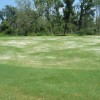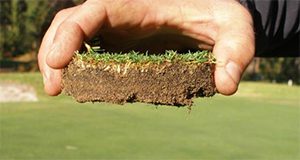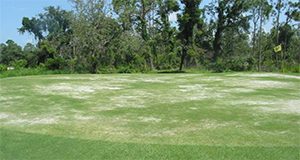Turfgrasses are essential components of many athletic fields, racetracks, and parks. Plant-parasitic nematodes can damage athletic fields by weakening turf root systems and causing turf to pull up during play, which can create dangerous conditions for players. To help keep turf–and athletes–healthy, this 7-page fact sheet written by William T. Crow and published by the Department of Entomology and Nematology explains how to spot and manage a nematode problem in an athletic field.
edis.ifas.ufl.edu/in126
Tag: commercial turf pest nematodes
Nematode Management for Golf Courses in Florida
UF/IFAS is committed to providing the most current information on the notoriously difficult problem of managing nematodes on golf courses. This publication is updated and revised whenever there is a breaking development, to bring you the new information and management advice. Nine pages, revised in January 2017 by William T. Crow and published by the UF Department of Entomology and Nematology.
http://edis.ifas.ufl.edu/in124
Nematode Management for Golf Courses in Florida (ENY008/IN124)
 Of all the pests that commonly affect golf course turf in Florida, nematodes are probably the least understood and most difficult to manage. Nematode problems are more common and more severe in Florida than in most other states because our climate and soils provide a perfect habitat for many of the most destructive nematode species. This 8-page fact sheet explains what plant-parasitic nematodes are, how they affect turf, how to tell if they are a problem, and how to manage them. Written by William T. Crow, and published by the UF Department of Entomology and Nematology, January 2013.
Of all the pests that commonly affect golf course turf in Florida, nematodes are probably the least understood and most difficult to manage. Nematode problems are more common and more severe in Florida than in most other states because our climate and soils provide a perfect habitat for many of the most destructive nematode species. This 8-page fact sheet explains what plant-parasitic nematodes are, how they affect turf, how to tell if they are a problem, and how to manage them. Written by William T. Crow, and published by the UF Department of Entomology and Nematology, January 2013.
http://edis.ifas.ufl.edu/in124

